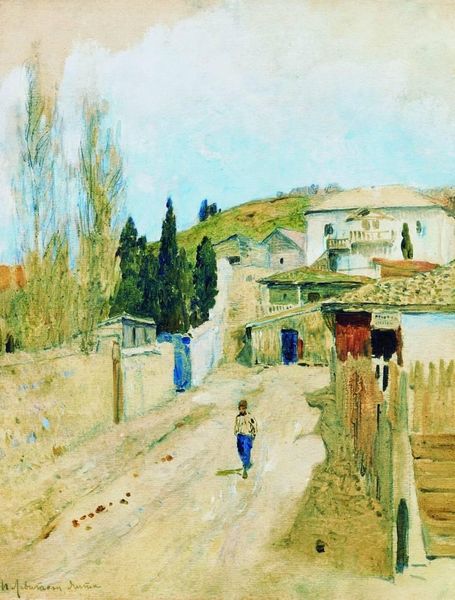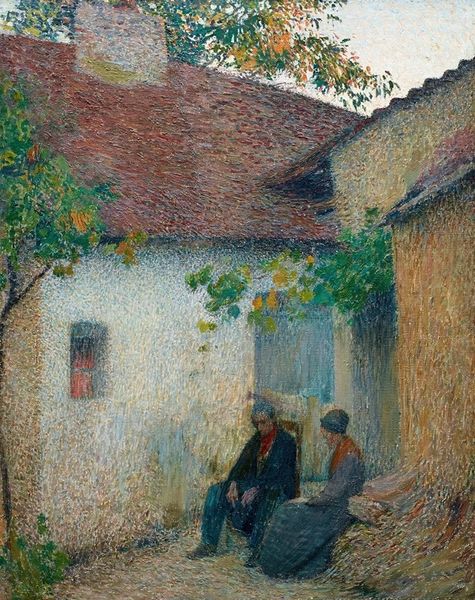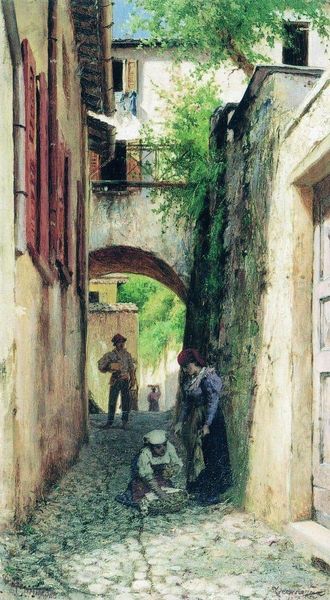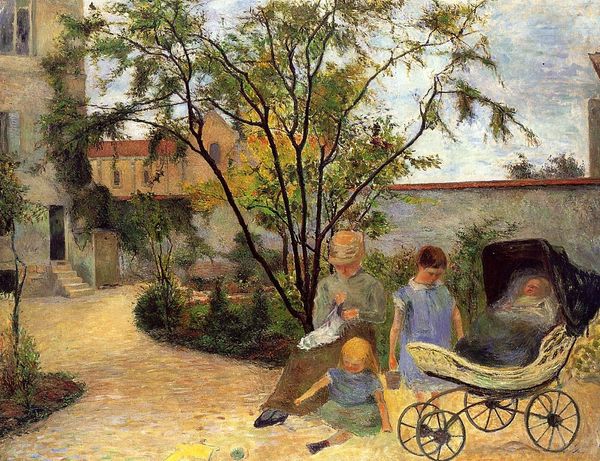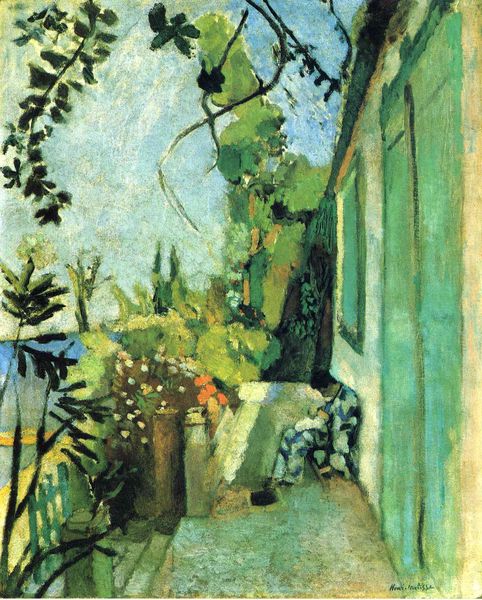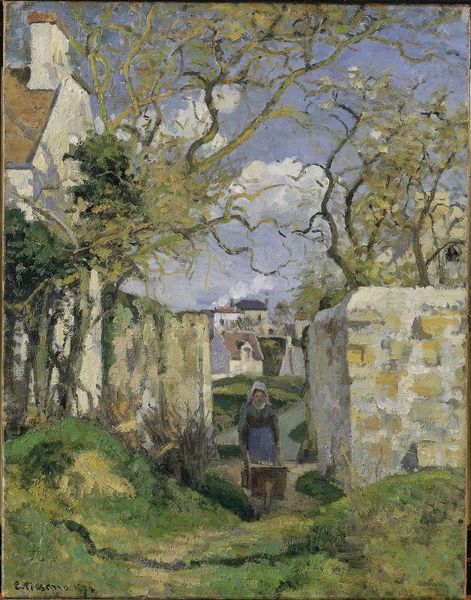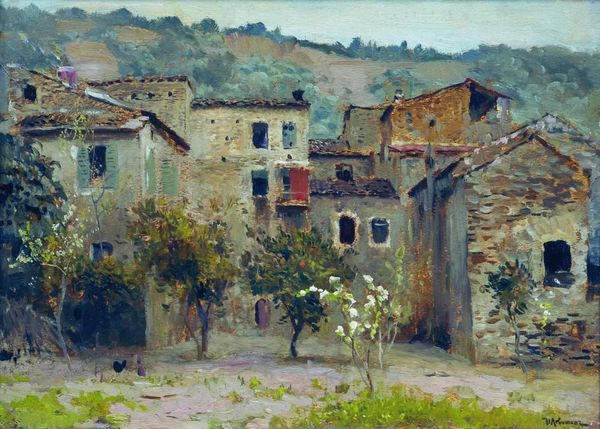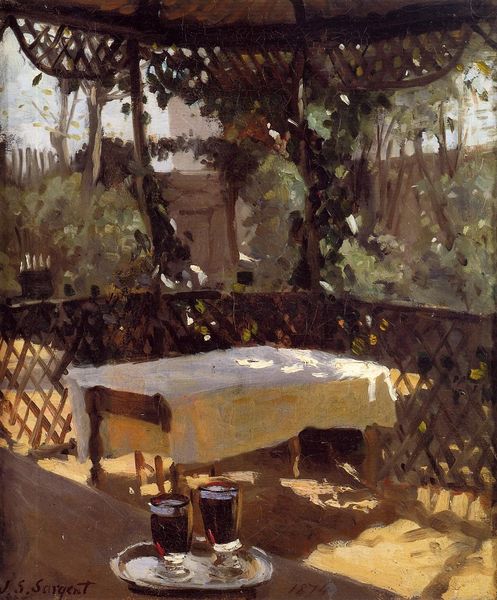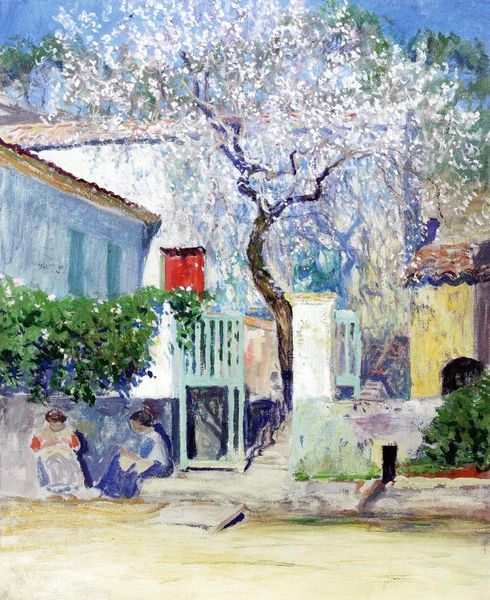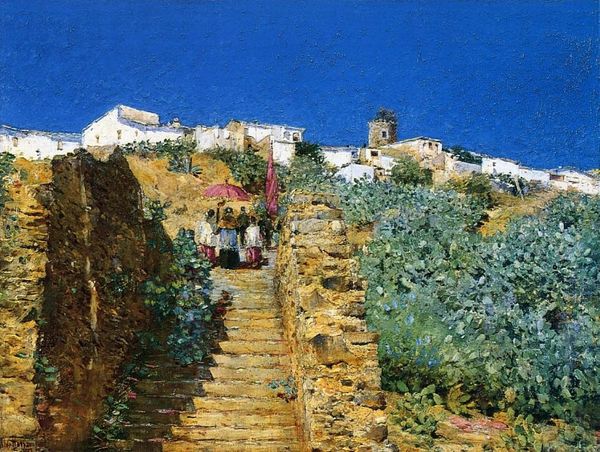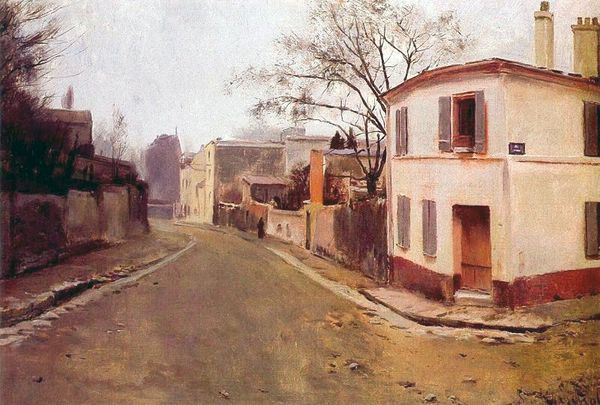
Copyright: Public domain
Curator: What strikes me immediately is the quiet, almost melancholic feel. There's a sense of stillness, a hush in this sun-drenched yard. Editor: Telemaco Signorini painted "September Morning in Settignano" in 1891 using oil paint in the plein-air style. I am most fascinated by its exploration into how modern life integrates into the landscape in the late 19th century. Curator: Absolutely, the setting, seemingly a private courtyard in Settignano, is bathed in a diffused light that gives it a dreamlike quality. I’m intrigued by the table set prominently in the foreground, and the solitary chicken perched on one of the chairs. What does this tell us about domesticity and the place of nature in Italian daily life? Editor: Signorini was a committed social observer. Consider his engagement with the Macchiaioli movement's push for painting modern life, rather than just historical subjects. The city becomes a vital component. Also, observe his distinctive mark-making, these "macchie" or blotches, serve more than as mere records of optical impressions; they capture a lived social reality. This invites us to ponder class dynamics, as well, since the location near Florence provided vacation and rest destinations away from the confines of modern city. Curator: Yes, it's precisely that tension—or maybe symbiosis—between the lived-in space and the natural world that resonates so strongly. The slightly overgrown vines, the mismatched furniture. And I think that singular chicken transforms the space into this intimate and personalized world, questioning rigid expectations of "urbanity". How can we place Signorini in relation to modernism more broadly, knowing this intimate relationship with our non-human world is something many people lacked access to at this time? Editor: I would contend that Signorini's significance extends to his representation of civic spaces at a crucial period of Italian social and political transition during the later part of the nineteenth century. Viewing this artwork also can allow us to acknowledge Italy's complex modernization trajectory, from urban centers like Florence outward. Curator: I appreciate that focus. Editor: As do I, it offers so much scope to broaden our dialogue.
Comments
No comments
Be the first to comment and join the conversation on the ultimate creative platform.
